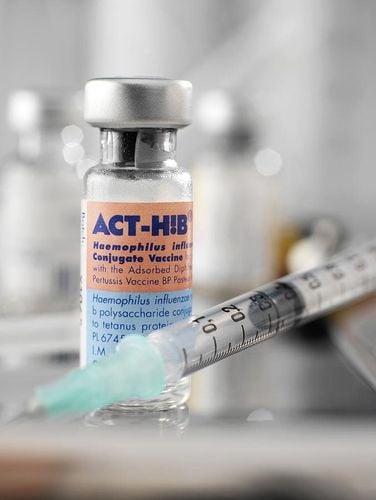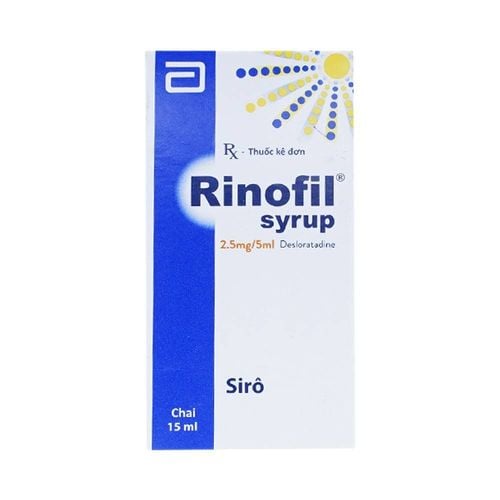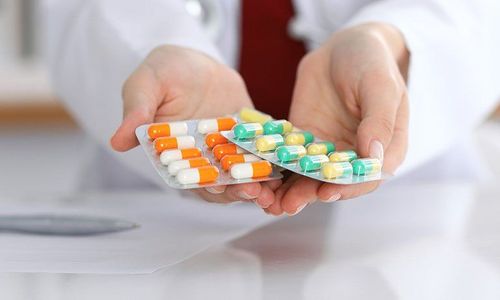This is an automatically translated article.
Theparmol Extra belongs to the group of analgesics, antipyretics, anti-inflammatory drugs that are often used to quickly relieve headaches, sore throat, menstrual pain and reduce fever quickly.
1. Uses of Theparmol Extra
Theparmol Extra contains an ingredient that is a combination of Paracetamol and Caffeine, which has the effect of quickly reducing pain, reducing fever with high efficiency. In particular, Paracetamol (Acetaminophen) acts on the central-peripheral, has analgesic and antipyretic activities due to inhibition of cyclooxygenase enzyme activity in the synthesis of prostaglandins, which are substances that cause fever, inflammation and pain in the body. . In addition, Paracetamol also has a strong hypothermia effect due to its action on the hypothalamus, vasodilation and increased peripheral blood flow. As for caffeine, xanthine derivatives extracted from coffee, cocoa or synthesized from uric acid have a mild stimulant effect on the central nervous system, support pain relief and ease muscle activity.
Theparmol Extra is usually indicated for the treatment of mild to moderate pain in the following cases:
Headache; Dysmenorrhea ; Sore throat; Musculoskeletal pain; Fever and pain after vaccination; Pain after dental procedures, toothache; Pain in arthritis. Contraindications of Theparmol Extra include:
Patients with hypersensitivity to Paracetamol, caffeine or any other component of the preparation; Patients with severe liver failure; Patients with glucose-6-phosphate dehydrogenase deficiency.
2. Dosage of Theparmol Extra
Theparmol Extra is made in the form of oral capsules, usually used after meals, with plenty of water. Dosage of the drug Theparmol Extra is as follows:
For adults and children aged 16 years and over: Take 1-2 tablets, 4-6 hours apart, do not take more than 8 tablets/day; Children from 12-15 years old: 1 tablet / time / 6 hours, do not take more than 4 tablets / day; Children under 12 years old use other suitable dosage as directed by the doctor; Paracetamol should not be used for self-administration of pain for more than 10 days in adults or 5 days in children because long-term pain may be a sign of a medical condition that requires treating the cause rather than the symptom; Do not use Paracetamol to self-treat adults and children with a high fever above 39.5 degrees Celsius, a fever that lasts for more than 3 days, or a recurring fever unless directed by a doctor because it could be a sign of serious illness. If Paracetamol overdose occurs due to a single dose or repeated large doses (7.5-10g daily for 1-2 days) or due to long-term use of the drug can cause dose-dependent hepatic necrosis, also The most dangerous toxicity can cause death. Patients often have symptoms of nausea, abdominal pain, cyanosis of the skin, mucous membranes and nails.
The management of Paracetamol poisoning is done as follows:
Gastric lavage in all cases, preferably within 4 hours after ingestion; The main detoxification therapy is sulfhydryl compounds. N-acetylcysteine is effective when taken orally or intravenously. Treatment with N-acetylcysteine is more effective when the drug is given less than 10 hours after taking Paracetamol; Give oral N-acetylcysteine the first dose is 140mg/kg body weight, then give 17 more doses of 70mg/kg body weight every 4 hours.
3. Side effects of the drug Theparmol Extra
In some patients when using Theparmol Extra may experience side effects such as:
Skin rash; Vomiting, nausea, diarrhea; Decrease in neutrophils; Decrease in total platelet count; Kidney disease, kidney toxicity in long-term abuse; Liver failure when taking high doses, prolonged; Steven-Johnson syndrome, toxic epidermal necrolysis, Lyell's syndrome, acute generalized exanthematous pustulosis.
4. Be careful when using Theparmol Extra
Some general precautions when using Theparmol Extra include:
Use caution when using Theparmol Extra in patients with pre-existing anemia because cyanosis may not be evident, although there are dangerously high concentrations. danger of methemoglobin in the blood; Drinking a lot of alcohol can increase the hepatotoxicity of Paracetamol, so patients using Theparmol Extra should avoid alcohol; Theparmol Extra should be used with caution in patients with impaired liver/renal function; Paracetamol and caffeine cross the placental barrier and are excreted in breast milk, therefore Theparmol Extra should be used during pregnancy and lactation only when clearly needed.
5. Drug interactions with Theparmol Extra
Paracetamol may slightly increase the anticoagulant effect of Coumarin and indandion derivatives; Beware of the potential for severe hypothermia in patients receiving concomitant phenothiazines and antipyretic therapy; Anticonvulsant drugs such as phenytoin, barbiturates, carbamazepine induce enzymes in the liver microsomes, may increase the hepatotoxicity of Paracetamol by increasing metabolism of the drug into toxic substances to the liver Probenecid can reduce the elimination of Paracetamol and increase Paracetamol plasma half-life; Paracetamol absorption may be reduced if used concomitantly with Cholestyramine; Erythromycin, Domperidone, Metoclopramide increase the absorption of Paracetamol; Note when combining Theparmol Extra with Ciprofloxacin and Norfloxacin because it significantly increases the concentration of caffeine in the body, which can cause irritation or hallucinations. The article has provided information about the uses, dosage and precautions when using Theparmol Extra. To ensure safety for your health and maximize the effectiveness of your treatment, you need to take Theparmol Extra exactly as directed by your doctor.
Please dial HOTLINE for more information or register for an appointment HERE. Download MyVinmec app to make appointments faster and to manage your bookings easily.













